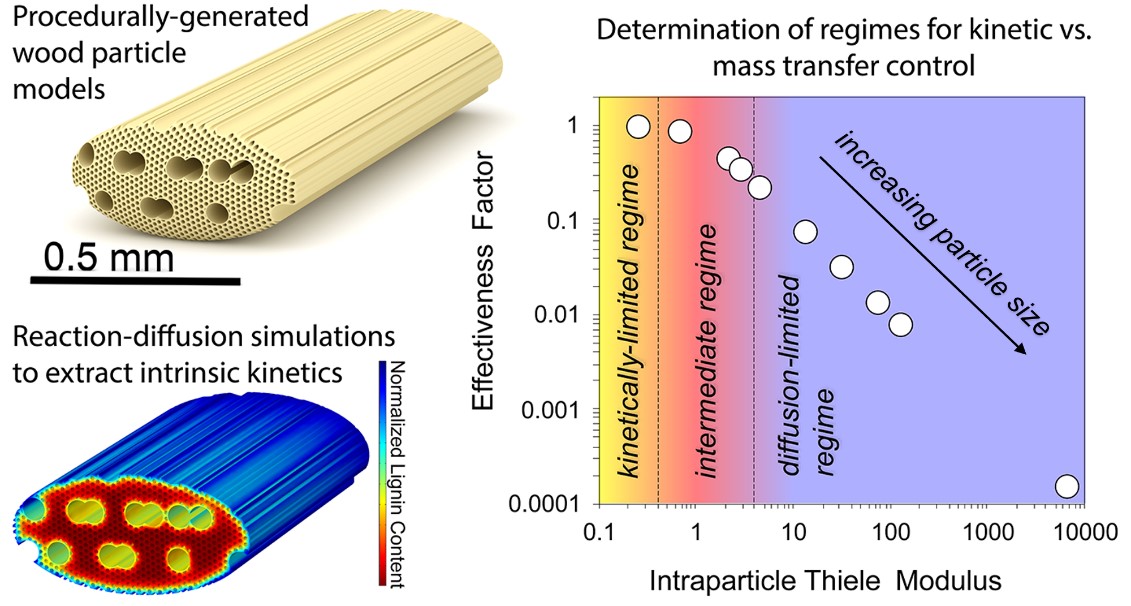(437e) Mesoscale Reaction?Diffusion Phenomena Governing Lignin?First Biomass Fractionation
AIChE Annual Meeting
2020
2020 Virtual AIChE Annual Meeting
Catalysis and Reaction Engineering Division
Reaction Engineering for Biomass Conversion
Monday, November 16, 2020 - 9:00am to 9:15am
Lignin solvolysis from the plant cell wall is the critical first step in lignin depolymerization processes involving whole biomass feedstocks. However, little is known about the coupled reaction kinetics and transport phenomena that govern effective rates of lignin extraction. We will present an experimentally validated simulation framework that determines intrinsic, transportâ€independent kinetic parameters for the solvolysis of lignin, hemicellulose, and cellulose upon incorporating feedstock characteristics for methanolâ€based extraction of poplar as an example fractionation process. Lignin fragment diffusion is predicted to compete on the same time and length scales as reactions of lignin within cell walls and longitudinal pores of typical milled particle sizes, with mass transfer resistances predicted to dominate solvolysis of poplar particles exceeding as little as ~2 mm in length. Beyond the ~2 mm threshold, effectiveness factors are predicted below 0.25, implying that pore diffusion resistances may attenuate observable kinetic rate measurements by at least 75% in such cases. Thus, researchers are recommended to conduct kinetic evaluations of ligninâ€first catalysts using biomass particles smaller than ~0.2 mm in length to avoid feedstockâ€specific mass transfer limitations in lignin conversion studies. Lastly, this simulation framework will be extended to model the alkaline deacetylation of corn stover, an unrelated pretreatment system which exhibits unique mesoscale diffusion limitations. Overall, this presentation highlights opportunities to improve biomass fractionation and conversion via reaction engineering and provides actionable kinetic information to guide the design and scaleâ€up of emerging biorefinery strategies.


